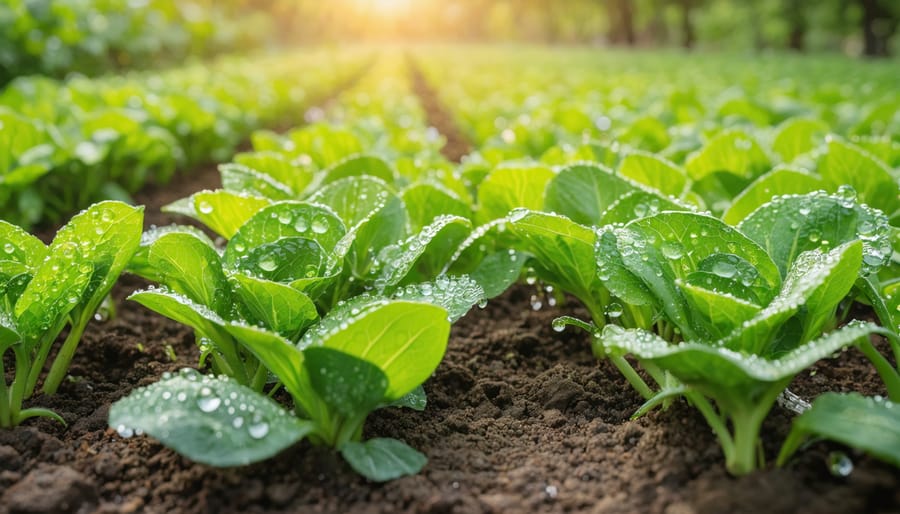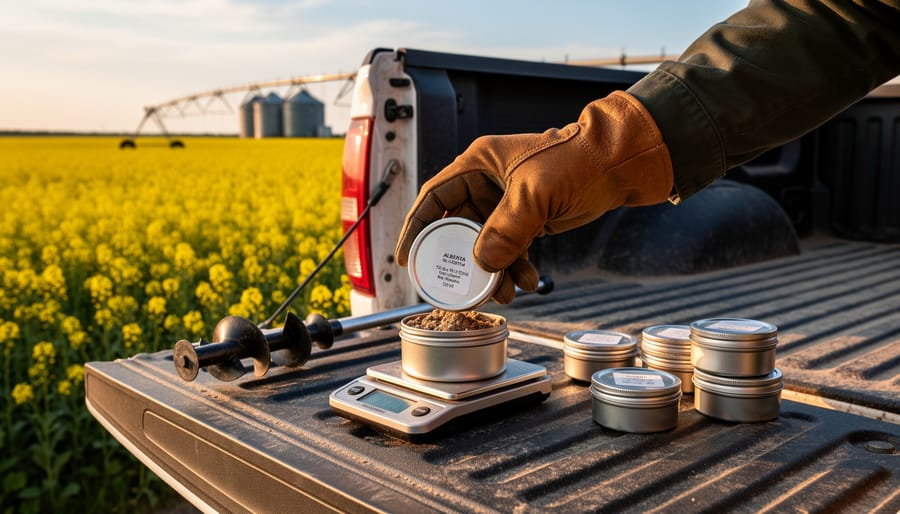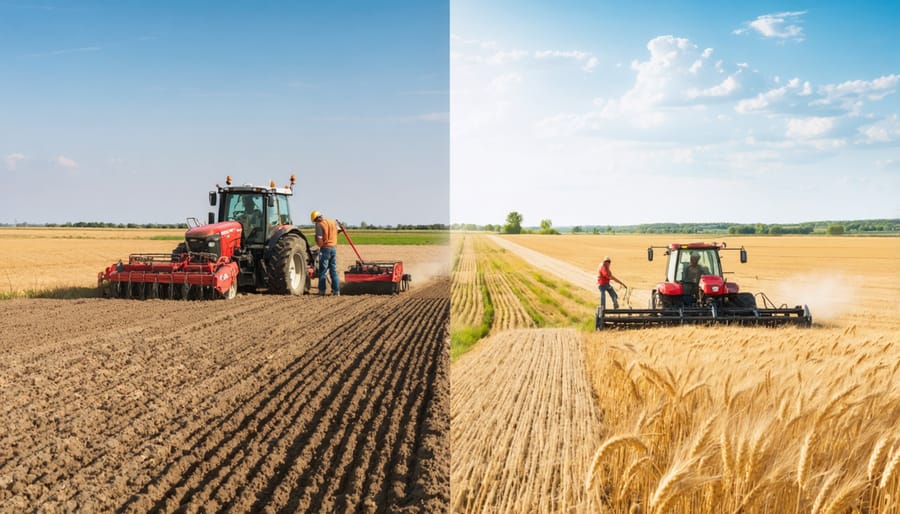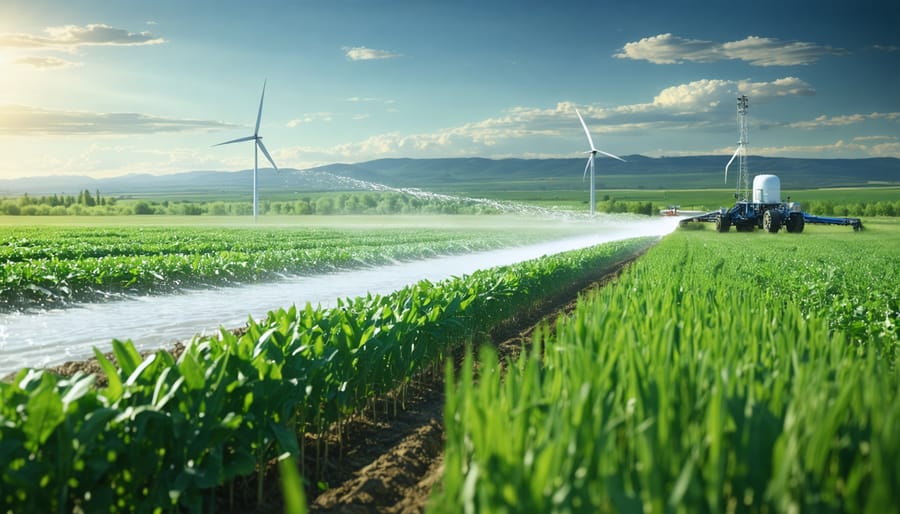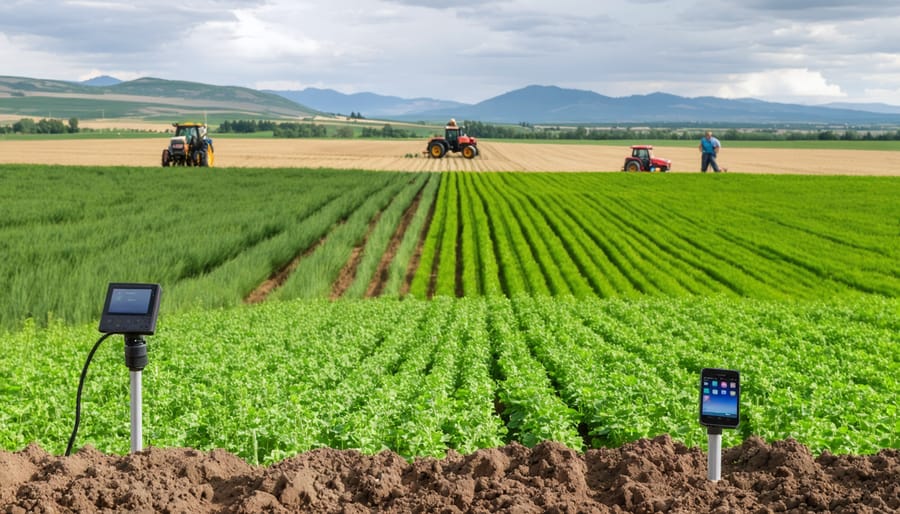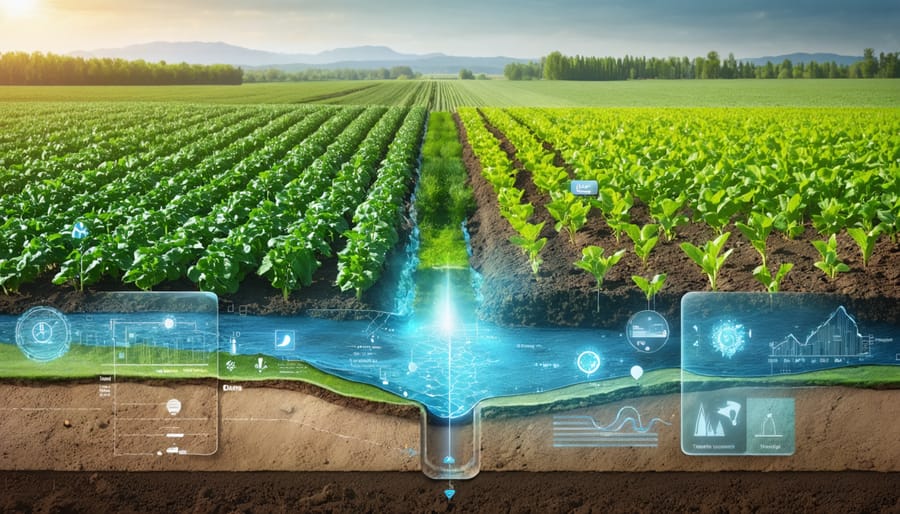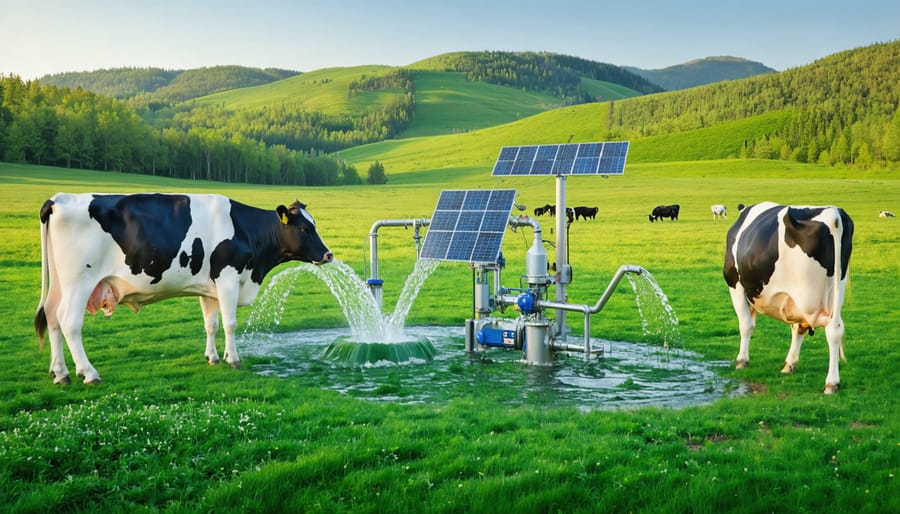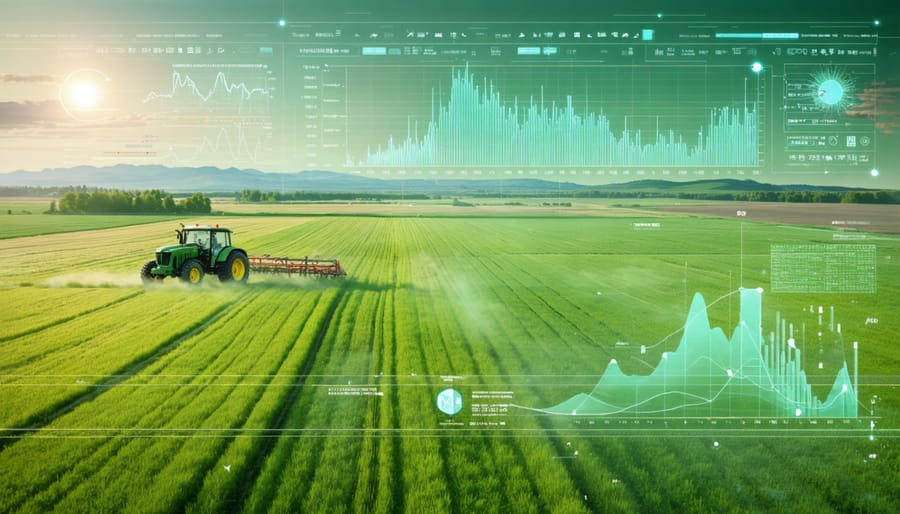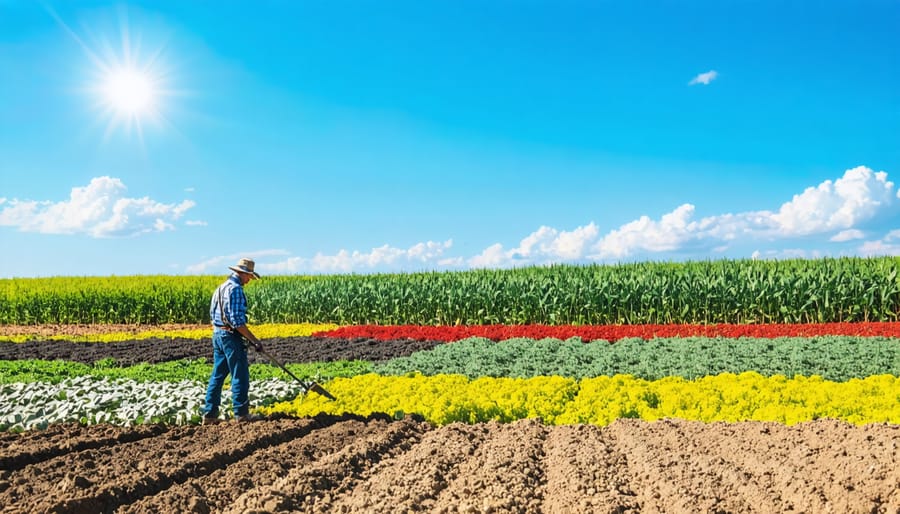Transform tiny urban spaces into thriving micro-farms by maximizing every square meter with vertical growing systems, companion planting, and intensive soil management. Alberta’s unique climate demands smart adaptation – innovative farmers across the province are now producing up to 25 kg of vegetables per square meter using precision micro-irrigation and season extension techniques.
Small-scale agriculture is revolutionizing food production across Western Canada, with micro-farms under 0.4 hectares generating annual revenues between $40,000-60,000 through strategic crop selection and direct-to-consumer marketing. These compact operations thrive by focusing on high-value crops like microgreens, herbs, and specialty vegetables that flourish in controlled environments.
Micro-farming isn’t just about size – it’s about precision. By implementing data-driven irrigation systems, carefully planned succession planting, and greenhouse technology adapted for Alberta’s climate zones, small-scale producers are achieving yields that rival traditional farming methods while using 90% less water and significantly reducing their environmental impact. This sustainable approach to agriculture is proving especially valuable for new farmers entering the industry with limited land access and capital.
Why Micro-Irrigation Works for Alberta’s Small Farms
Water Conservation in Alberta’s Climate
In Alberta’s semi-arid climate, effective water conservation in Alberta is crucial for successful micro-farming operations. Our province’s unique weather patterns, characterized by variable rainfall and occasional drought conditions, require thoughtful water management strategies.
Micro-farming techniques naturally support water efficiency through targeted irrigation methods. By implementing drip systems and soil moisture sensors, small-scale farmers can reduce water usage by up to 70% compared to traditional farming methods. These systems deliver water directly to plant roots, minimizing evaporation and runoff.
Mulching practices, particularly using locally available materials like straw or wood chips, help retain soil moisture and reduce watering frequency. Many Alberta micro-farmers have found success with rainwater harvesting systems, collecting precipitation during wet periods for use during drier months.
Consider incorporating drought-resistant heritage crops and maintaining healthy soil organic matter levels to improve water retention. These practices not only conserve water but also contribute to the overall sustainability of your micro-farming operation while reducing operational costs and environmental impact.
Cost-Effective Solutions for Small Plots
Starting a micro-farm doesn’t have to break the bank. By focusing on cost-effective water management solutions and smart resource allocation, Alberta farmers can maximize their small plots while maintaining a healthy bottom line.
Initial setup costs typically range from $5,000 to $15,000 CAD for a 0.4-hectare plot, including basic irrigation systems, soil preparation, and essential tools. Many successful micro-farmers in Southern Alberta report breaking even within two growing seasons by focusing on high-value crops like herbs, microgreens, and specialty vegetables.
Consider starting with a greenhouse tunnel ($2,000-3,000) to extend the growing season and protect crops from Alberta’s unpredictable weather. Implementing drip irrigation systems ($500-1,000) can reduce water consumption by up to 70% compared to traditional methods. Local equipment sharing programs and co-ops can further reduce startup costs.
For optimal ROI, focus on crops that thrive in our climate and command premium prices at farmers’ markets. Many Alberta micro-farmers report net profits of $15,000-25,000 annually on plots smaller than half a hectare through strategic crop selection and direct-to-consumer sales channels.
Popular Micro-Irrigation Systems for Alberta Farms
Drip Irrigation Systems
Drip irrigation systems are a game-changer for Alberta micro-farmers, offering precise water delivery while conserving this precious resource. These systems typically consist of polyethylene tubing with small holes or emitters that deliver water directly to plant roots, reducing waste and preventing leaf diseases common in overhead watering.
For Alberta’s climate, installing drip irrigation requires careful planning. Start by connecting your main water source to a filter and pressure regulator – essential components that prevent clogging and ensure consistent flow. Layout your main line along crop rows, then attach smaller distribution tubes with emitters placed near each plant. Most Alberta growers find success with emitters spaced 30-45 centimetres apart, though spacing can vary based on soil type and crop needs.
Local farmer Sarah Thompson from Lacombe shares, “Our drip system cut water usage by 40% while improving our tomato yield. The initial setup took a weekend, but the time savings in maintenance have been worth every minute.”
Maintenance is straightforward but crucial. Flush lines monthly during growing season to prevent mineral buildup, and inspect emitters regularly for clogs. Before winter, drain all lines completely to prevent freeze damage. Many Alberta farmers add simple automation with timers, allowing for precise watering schedules that account for both morning dew and afternoon heat.
For season-long success, consider adding organic mulch around drip lines to further reduce evaporation and suppress weed growth.
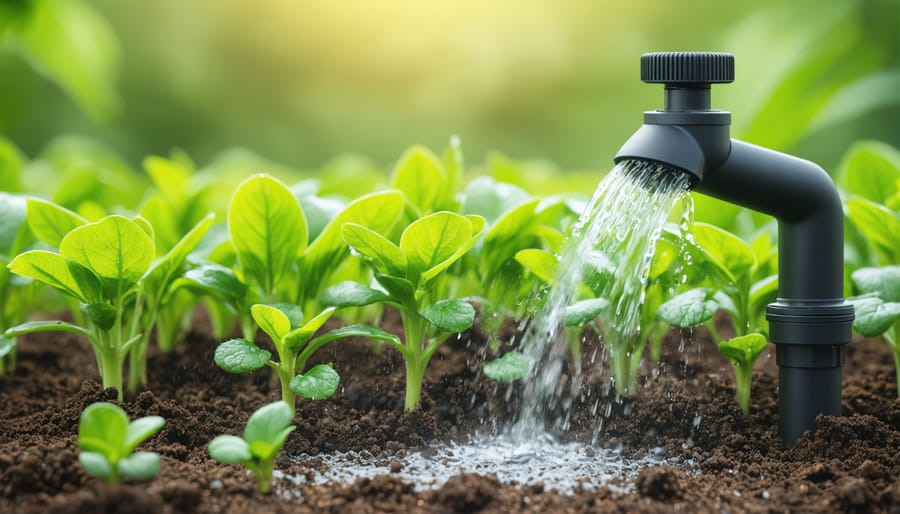
Micro-Sprinklers
Micro-sprinklers have revolutionized small-scale farming in Alberta, offering precise water delivery that’s particularly valuable during our hot summer months. These systems typically operate at lower pressures than traditional sprinklers and distribute water in a fine spray pattern just above ground level, making them ideal for our diverse growing conditions.
For Alberta farmers, micro-sprinklers provide several distinct advantages. They create a gentler precipitation rate that prevents soil erosion, crucial for maintaining our rich prairie topsoil. The systems can be adjusted to cover areas from 1 to 7 metres in diameter, perfect for both greenhouse operations and outdoor market gardens.
Local farmer Sarah McKenzie from Red Deer shares, “Since switching to micro-sprinklers, we’ve reduced our water usage by 30% while maintaining optimal soil moisture levels. The system’s flexibility allows us to adapt to different crop needs throughout the season.”
These systems are particularly effective for row crops, berry patches, and tree nurseries common in central Alberta. During installation, sprinklers can be mounted on stakes or suspended from support wires, with typical spacing of 3 to 4 metres between units. The initial setup costs range from $2,000 to $4,000 per hectare, but the water savings and improved crop health often offset this investment within two to three growing seasons.
Maintenance is straightforward – regular cleaning of filters and occasional inspection of emitters helps prevent clogging from our mineral-rich water. For winter protection, systems can be easily drained and stored, making them well-suited to our climate.
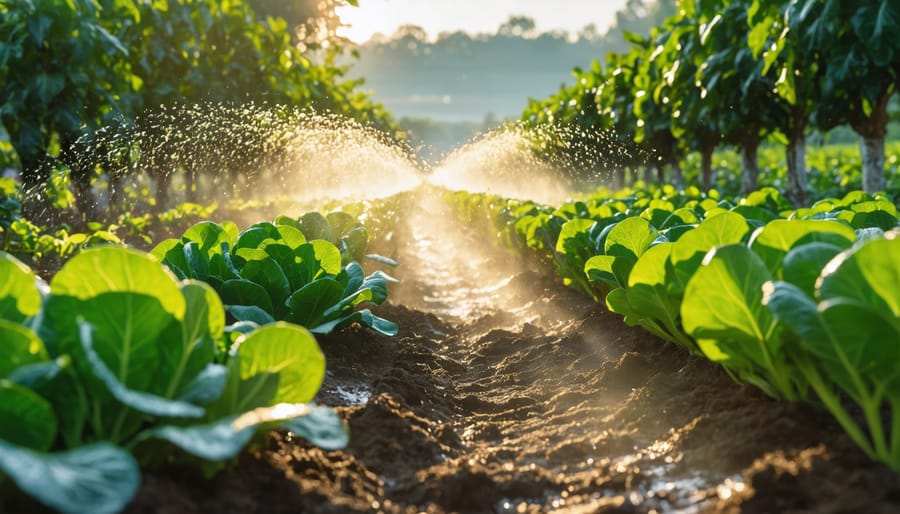
Smart Controllers and Automation
Modern micro-farming has embraced technological innovation through smart controllers and automation systems, revolutionizing how Alberta farmers manage their operations. These intelligent systems integrate weather data, soil moisture sensors, and automated controls to optimize water usage and crop health.
The implementation of smart irrigation efficiency technologies has shown remarkable results, with local farmers reporting water savings of up to 30% compared to traditional methods. These systems use sophisticated algorithms to determine precise watering schedules based on real-time environmental conditions and crop requirements.
Popular controller options include WiFi-enabled devices that can be monitored and adjusted through smartphone apps, allowing farmers to manage irrigation remotely. Many Alberta growers have found success with systems that integrate multiple sensors throughout their fields, providing detailed data on soil moisture levels at various depths.
For small-scale operations, basic smart controllers starting at around $200 can effectively manage multiple irrigation zones. More advanced systems, while requiring a higher initial investment of $500-1,500, often pay for themselves within two growing seasons through reduced water consumption and improved crop yields.
Local agricultural extension services offer training programs to help farmers select and implement the most suitable automation systems for their specific needs, ensuring optimal performance in Alberta’s unique climate conditions.
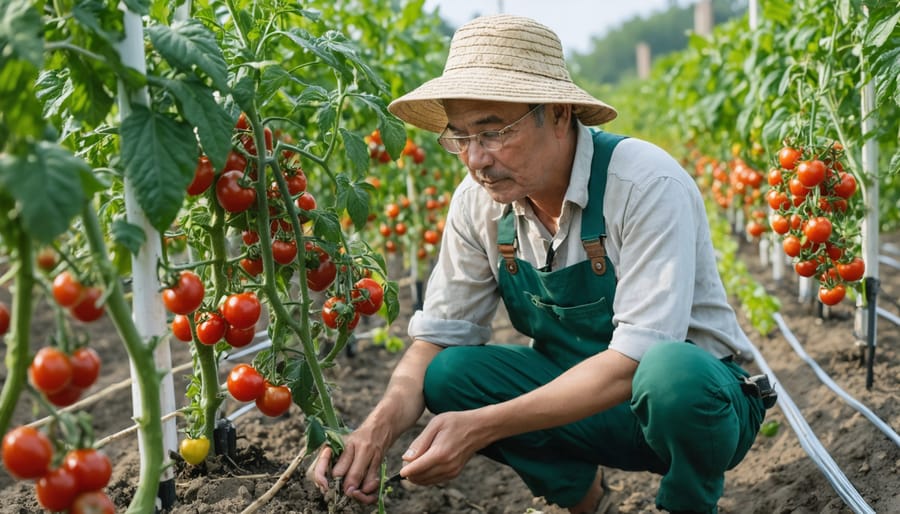
Real Results: Alberta Farm Case Study
Located just outside of Olds, Alberta, the Thompson Family Farm serves as a compelling example of how micro-irrigation can transform small-scale agriculture in our province. Sarah and Mike Thompson transitioned their 4-hectare market garden operation to a micro-irrigation system in 2019, facing challenges that many Alberta farmers would recognize: irregular rainfall patterns, rising water costs, and the need to optimize production on limited land.
The Thompsons implemented a customized drip irrigation system, carefully designed to address their specific crop needs and soil conditions. Their setup includes pressure-compensating drip lines for their tomato and cucumber greenhouses, and micro-sprinklers for their field crops of leafy greens and root vegetables. The entire system operates on a smart controller that adjusts water delivery based on soil moisture sensors and local weather data.
The results have been remarkable. In the first full season after implementation, the Thompsons reported:
– 40% reduction in overall water usage
– 35% increase in crop yield, particularly in their high-value greenhouse crops
– 60% decrease in fungal disease incidents due to precise water application
– Labor savings of approximately 15 hours per week during peak season
“The biggest surprise wasn’t just the water savings,” shares Sarah Thompson. “It’s how much more consistent our crop quality became. Our tomatoes and cucumbers especially showed better color and size uniformity, which our restaurant clients love.”
The initial investment of $12,000 was recovered within two growing seasons through reduced water bills, increased yield, and better market prices for their premium produce. The Thompsons also accessed funding through the Canadian Agricultural Partnership’s Environmental Stewardship program, which covered 30% of their installation costs.
What makes this case study particularly relevant for Alberta farmers is how the Thompsons adapted their system for our climate. They incorporated freeze-protection measures, including automatic drain valves and buried supply lines below frost depth. During our notorious chinook winds, their moisture sensors help prevent over-drying by triggering supplemental irrigation as needed.
The Thompsons now host regular farm tours for other local growers interested in micro-irrigation. “We’re seeing more small farms in our area looking to maximize efficiency,” Mike notes. “Our experience shows that with proper planning and implementation, micro-irrigation isn’t just environmentally responsible – it’s good business for Alberta farmers.”
Getting Started with Micro-Irrigation
Planning Your System
Before breaking ground on your micro-farming system, careful planning is essential for success in Alberta’s unique climate. Start by mapping your available space, noting sun exposure patterns throughout the day and existing features like buildings or trees that might affect your system’s performance.
Consider your water source accessibility and evaluate soil conditions across your plot. Most successful micro-farms in our region operate in areas between 0.1 to 2 hectares, but even smaller spaces can be productive with proper planning. Factor in our typical frost-free period of 100-120 days when designing your layout.
Create zones based on water needs and crop compatibility. Group plants with similar irrigation requirements together to maximize efficiency. For example, root vegetables typically need less frequent watering than leafy greens. Leave adequate spacing between rows for maintenance access – typically 75-90 cm for comfortable working conditions.
Include a dedicated area for your irrigation control system, ensuring it’s protected from our harsh weather conditions. Plan for future expansion by installing main lines with slightly larger capacity than your current needs. Many Alberta farmers recommend incorporating a 20% buffer in your system’s capacity.
Consider seasonal challenges like spring runoff and summer drought periods. Include features like moisture sensors and automatic shut-offs to prevent overwatering and protect your crops during unexpected weather events. Remember, a well-planned system will save you time and resources in the long run while optimizing your farm’s productivity.
Local Resources and Support
Alberta’s micro-farming community benefits from a robust network of support services and resources. The Alberta Farm Fresh Producers Association offers mentorship programs, networking opportunities, and educational workshops specifically designed for small-scale farmers. Their annual conference brings together experts and practitioners to share innovative micro-farming techniques.
Local agricultural extension offices, located in major centres across the province, provide free consultations and soil testing services. The University of Alberta’s Faculty of Agricultural, Life & Environmental Sciences frequently hosts workshops and publishes research relevant to micro-farming practices in our climate.
Financial assistance is available through various programs. The Canadian Agricultural Partnership (CAP) in Alberta offers grants for sustainable farming initiatives, while Alberta Financial Services Corporation provides specialized insurance options for small-scale operations.
Several community organizations support micro-farmers through equipment-sharing programs and farmers’ markets. The Young Agrarians Alberta network connects new farmers with mentors and land access opportunities. Their resource map helps locate nearby farming supplies, processing facilities, and marketing channels.
For hands-on learning, Olds College’s continuing education program offers practical courses in small-scale farming techniques. The Alberta Small Scale Food Processors Association provides valuable guidance on food safety regulations and processing requirements specific to micro-farming operations.
Contact your nearest Alberta Agriculture and Forestry office to connect with a local agricultural specialist who can guide you through available resources and programs.
Micro-farming represents a powerful opportunity for Alberta’s agricultural community to enhance productivity while promoting sustainability. By implementing these small-scale farming techniques, you can significantly reduce water usage, maximize limited space, and create more resilient food production systems. The success stories from local farmers demonstrate that micro-farming isn’t just theory – it’s a practical solution that’s already working across our province.
Whether you’re managing a small plot in urban Edmonton or operating a family farm near Medicine Hat, the principles and techniques we’ve discussed can be adapted to suit your specific needs. Remember, starting small and scaling gradually allows you to refine your approach while minimizing risk. Connect with local agricultural extension services and fellow farmers who have embarked on this journey – their experience and support can be invaluable as you transition to micro-farming methods.
Take the first step today toward more sustainable and efficient farming practices. Your success contributes to building a more resilient agricultural future for Alberta.

